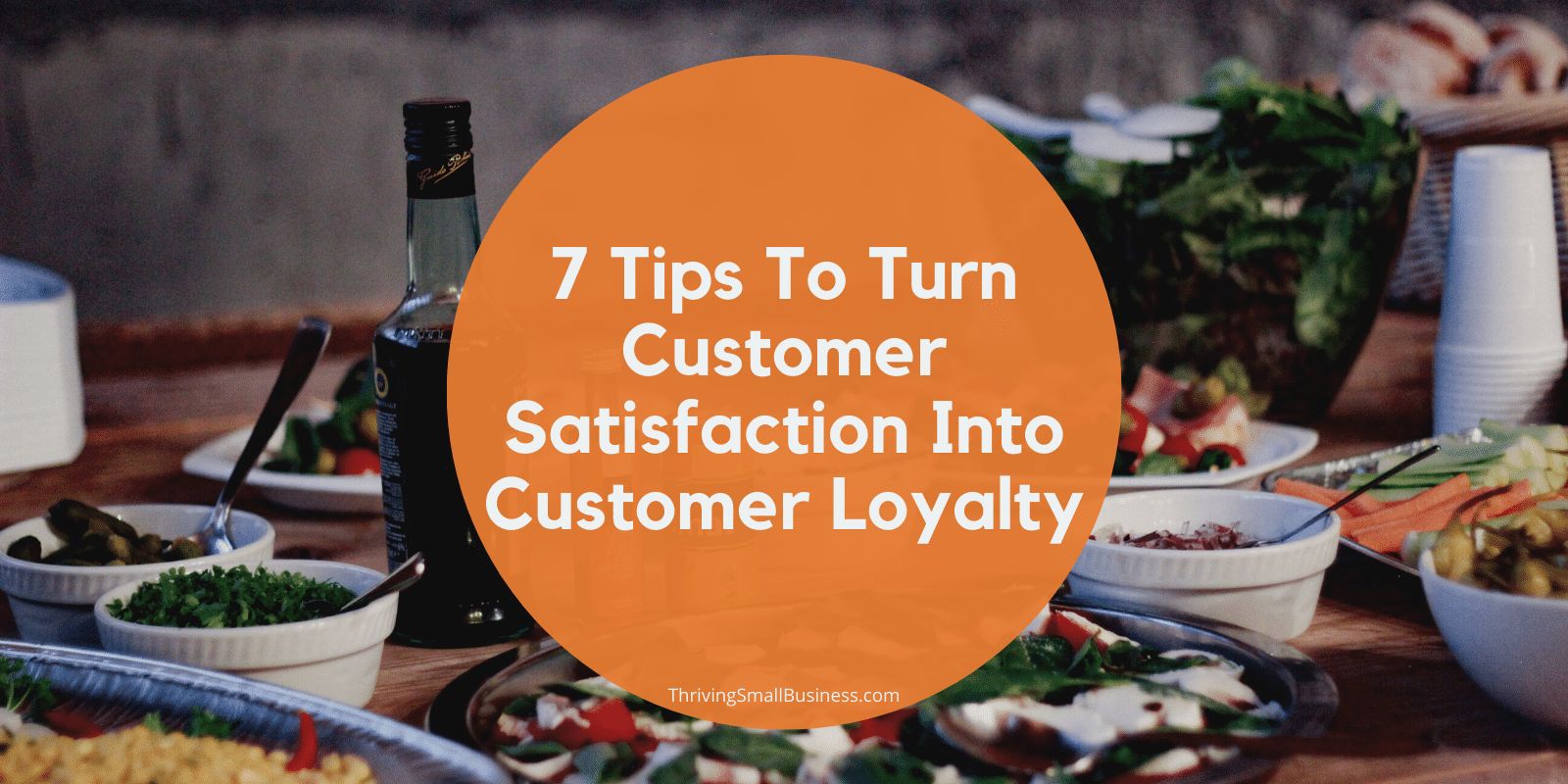How to Turn Customer Satisfaction into Customer Loyalty
A loyal customer base is important because it is those consumers who sustain and grow businesses.
Organizations that understand the importance of happy customers, need to think strategically in order to build a loyal customer base.
Successful organizations have learned that there is a difference between attracting customers, keeping customers and developing loyal customers.
Devoted customers are not only loyal to the organization, but also serve as advocates and help to solicit new customers by sharing their positive experiences.
We can all relate to a good service experience.
The question becomes, was that experience good enough for us to tell others about it?
When I think of my own personal experiences, I think of a special restaurant that my husband and I go to.
The staff is excellent and they add those special touches to create a memorable experience.
That is the kind of organization that I would tell my family and friends about because I want them to have the same great experience.
The Dollars and Cents of a Loyal Customer
If you wonder about the impact of a loyal customer, look at this example.
Let’s say you own a restaurant.
A customer who frequents your restaurant 6 times a year may contribute $300 ($50 X 6 visits) to your bottom line.
But a loyal customer that comes in once a week can be much more!
Imagine that a customer comes 52 times a year at $50 each visit, that customer could be worth $2,600!
Now imagine if you threw in some extra special occasion visits (when they bring the kids, parents, or clients), and you can gain significant dollars to your bottom line!
Just something to think about.
7 Things You Can Do To Influence Customer Loyalty
1. Solicit Customer Feedback
A great customer experience is what brings consumers back.
The only way to know how a customer perceives an experience is to ask them.
Solicit customer feedback and make sure that customer satisfaction is one of the critical success factors for your organization.
Feedback can come from surveys or customer focus groups.
Measure and monitor customer satisfaction and share data with all levels of the organization.

Executives and employees alike should be aware of customer requirements (for example, fast response times) as compared to customer feedback (slow response times).
Help employees understand the requirements and how the feedback tells the experience story.
These efforts result in satisfied customers, and satisfied customers can turn into loyal customers.
2. Create Customer-Centered Goals
Customer feedback should be interpreted and used to develop strategy.
This strategy should then be used to develop organizational business goals that are used to determine employee goals.
Goals should be based on meeting and exceeding customer requirements.
Employees should be held accountable for performance that supports customer satisfaction.
For instance, if you operate a customer call center, an employee’s goal might be to respond to customer calls within three rings.
A phone monitoring system can provide the data to show if those goals are achieved.
3. Create A Customer Service System
Business systems and processes are how services are provided to the customer.
Create customer service systems that are designed to deliver products and services.
Include in this system a process to deal with customer complaints and issues that may arise.
For example, a service recovery program is part of the service process with the goal of quickly addressing customer issues and complaints.
If done right, service recovery programs can turn an angry customer into a loyal one!
4. Process Improvement
Broken processes have a direct impact on the customer experience.
A structured quality management program can help develop solutions to systemic problems that affect the customer experience.
This is done by continually trying to improve the way products and services are delivered to the customer.
For example, if customer feedback suggests slow process times, gather a team and figure out a plan to improve process times.
Use quality tools to create flow charts of the current process, then work to eliminate steps in the process that don’t add value to the customer.
5. Manage For Service
Employees need to understand the importance of providing a great service experience.
Managing for a great customer experience should be incorporated into the day-to-day operational processes of the organization.
What this means is training and holding employees accountable for adhering to established customer service standards.
For example, if a supervisor observes an employee not complying with service standards, they should coach the employee on more appropriate behaviors.
6. Compensate Based On Customer Experience
At the end of the day, it is the customer who pays our salaries.
Employees should be compensated based on their ability to meet customer requirements.
Use customer satisfaction data to determine the executive compensation package in an effort to demonstrate the importance of the customer experience.
There should be measures in place to assess employee influence on customer satisfaction scores that should also be reflected in the annual performance appraisals and raise distribution.
For example, an organization should have customer satisfaction goals that are tied to performance pay.
If the organization meets those goals, it is reflected in the annual merit increase.
7. Share Business Strategy
Executives should communicate the organization’s business goals both internally (to employees) and externally (to the community).
Customers have an interest in what an organization is trying to accomplish.
For example, a business strategy might be to become the leader in customer service in a certain industry.
Customers remember organizations that make such promises.
Loyal customers pay the bills.
And, organizations that focus on a great service experience can create loyal customers.
To do this, there needs to be a constant effort from employees at all levels of the organization.
Customer loyalty has never been more important.
If you are a business owner, you should never lose sight of the importance of the customer experience and keep it at an ever-changing strategic level.
What does your organization do to increase customer loyalty?






